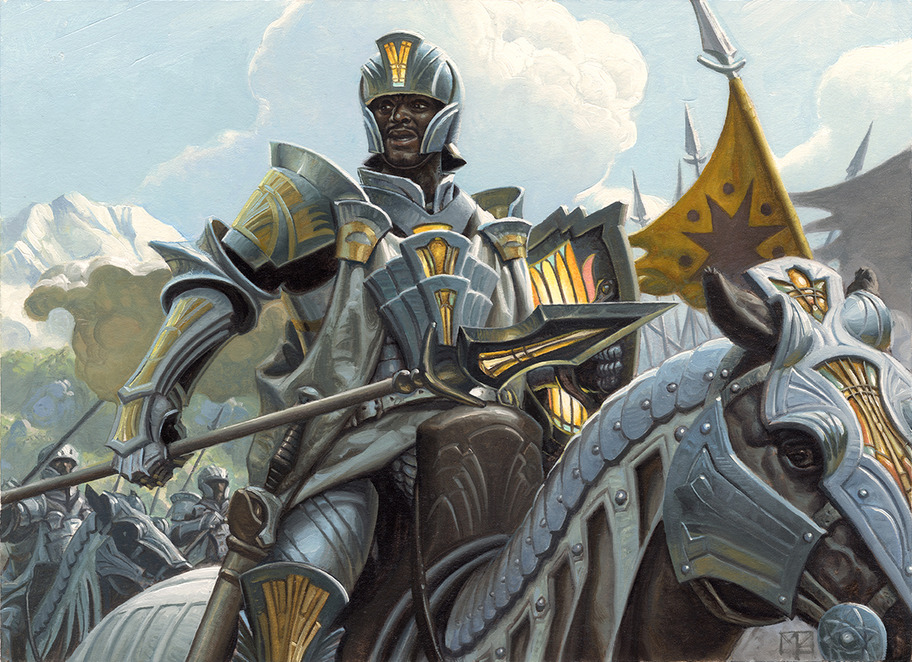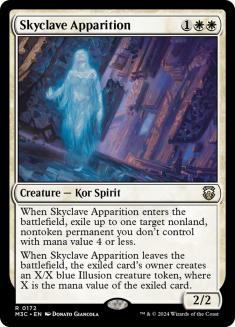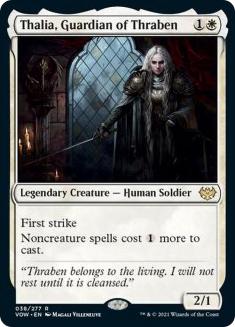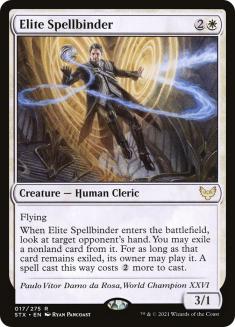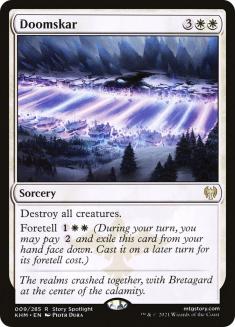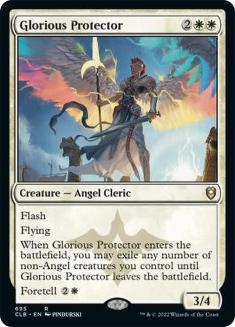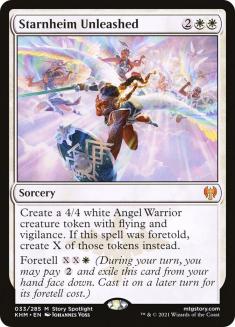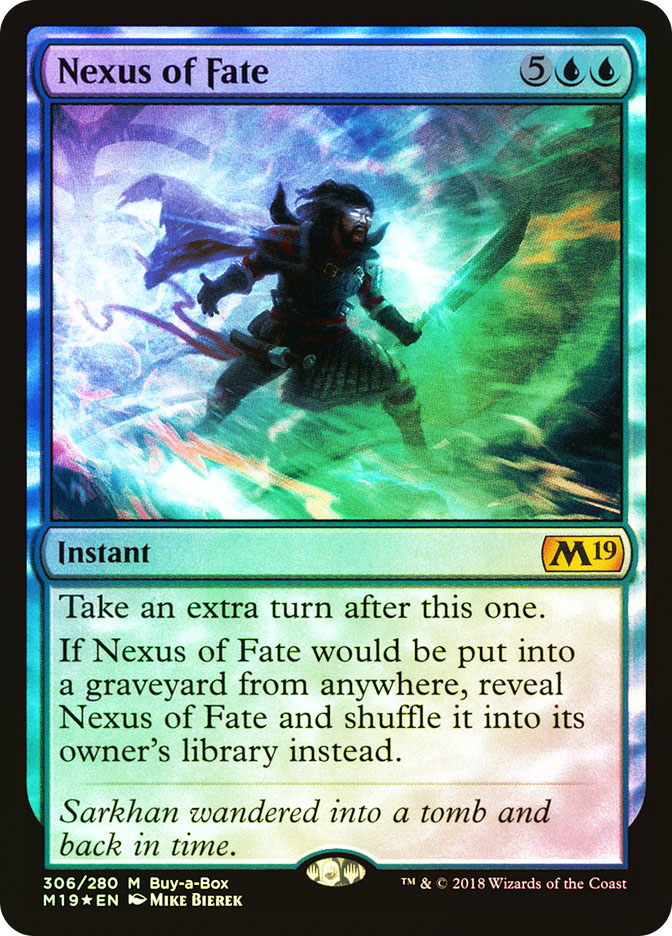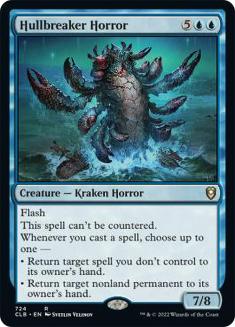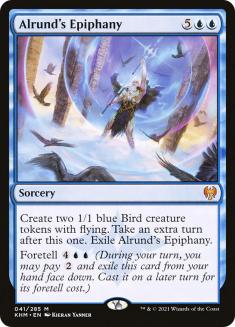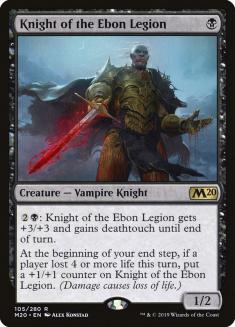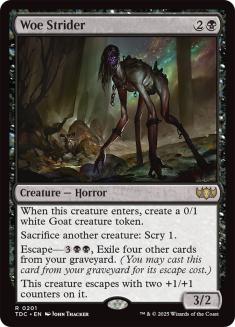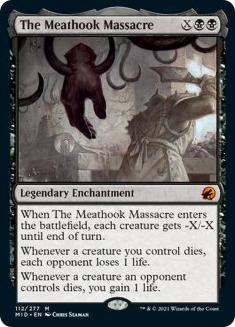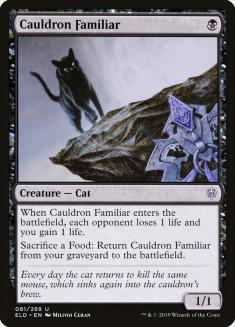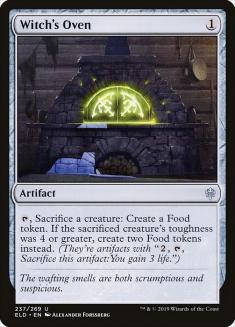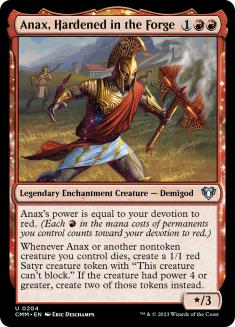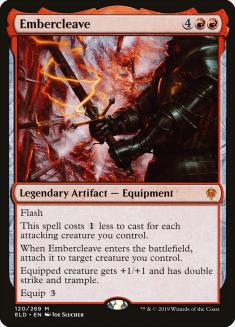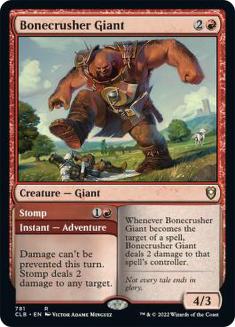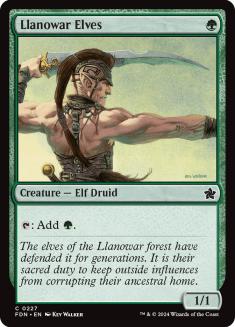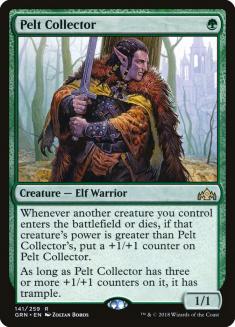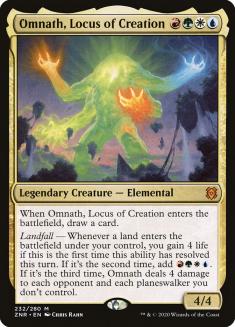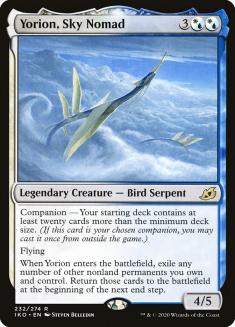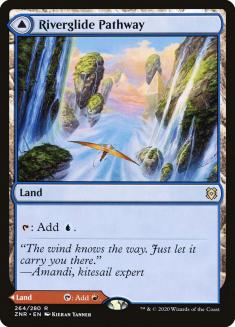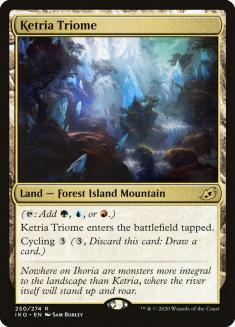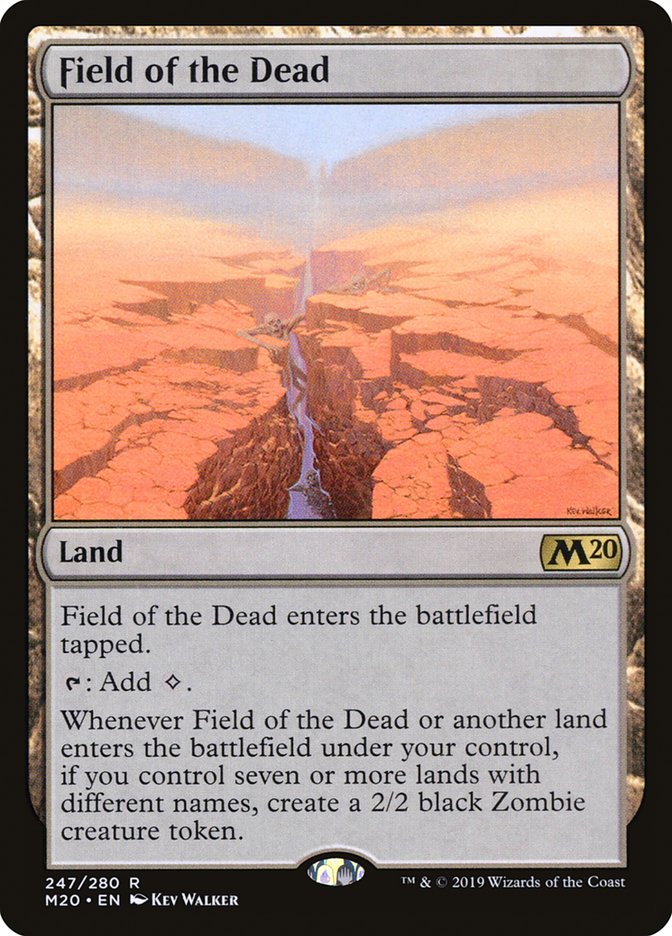It’s difficult to parse the years 2018 through 2021 as one block of time. The few tournaments that I played in 2019 yielded a Team Open win and Grand Prix Top 4 before Mythic Championship VI in Richmond completely took the wind out of my competitive sails. Thanks, Oko!
I met my partner Lizzie late in 2018, and she’s been my rock through the high highs of tournament glory and low lows of pandemic life. She doesn’t play Magic, but she was glued to the broadcast when we won in Baltimore and listened to every episode of The 540. I couldn’t possibly overstate how important her support is to me.
I had gotten quite comfortable in the commentary booth at this point, feeling that Todd Anderson and I were starting to really hit our stride. We were something of an odd couple, clashing in style and tone, but one thing that I can’t deny about Todd is that he gives a damn. You can’t teach that. My last show on the road ended up being alongside good friend Carmen Handy. I’d argue that it was the best broadcast I’ve ever been a part of. Then COVID hit, and, well. Here we are.
The Time Capsule Capstone
Welcome to my final Time Capsule Cube article! This project will be ongoing as more Magic sets come out, but I’ll be slower to update it than other projects. For the most part, these modules are static representations of their respective eras, though today’s module does come with an asterisk in that department. The previous modules have had clear starting and ending points, though with the most recent sets this isn’t set in stone. Before we get into that, here are some handy links to the other modules of the Time Capsule Cube:
- Alpha through Prophecy
- Invasion through Saviors of Kamigawa
- Ravnica: City of Guilds through Rise of the Eldrazi
- Scars of Mirrodin through Journey into Nyx
- Khans of Tarkir through Rivals of Ixalan
The starting point for today’s module is Dominaria, and in its current state features cards through Innistrad: Crimson Vow. Kamigawa: Neon Dynasty is still too new for me to try to determine which cards from it belong in a time capsule. The basis for these modules is also Mark Rosewater’s stages of design, and I don’t know exactly what the cutoff will be for the eight stage. Every previous stage has been four or five years, and this module was hard enough to trim down already with the volume of playable cards in every set these days. I like the current iteration of the Cube, but again, this is the one module that is subject to change.
We Didn’t Start the F.I.R.E.
This era encapsulates F.I.R.E. design, and continues the trend of Standard seeing significant bans. Guilds of Ravnica was a breath of fresh air upon release, but Core Set 2020, Throne of Eldraine, and a handful of more isolated offenders completely derailed the good thing that we had going. The power level of this module is very high, and you can see just how impactful the last few years of Magic design have been for Cube by looking over the list on Cube Cobra. Given the card pool that I’m working with, this module unsurprisingly has the general aesthetic of an Arena Cube. If you’ve enjoyed the Arena offerings, you’ll likely enjoy this list as well.
When I made my initial pass of the card file for this era, I found myself with nearly 400 cards that caught my interest, which was the highest of any module. Whittling this list down involved a lot of tough decisions, which is in stark contrast to trying to find enough cards to make the first module even work. Let’s break the Cube down by color and see where I landed.
White
Once again, the most significant draw to white is powerful aggressive creatures. White aggressive decks have had plenty of time in the spotlight in recent years, and on top of powerful rates like Benalish Marshal, there are also a number of creatures with powerful abilities in the spread. Skyclave Apparition became a multi-format and Cube all-star quickly upon printing, and Thalia, Guardian of Thraben’s reprint is significant in this module to push back against cards like Wilderness Reclamation and Nexus of Fate. Elite Spellbinder also serves as a powerful tool for white decks to push back against opponents with grander plans than attacking and blocking.
On the controlling side of things, Doomskar has definitely been disappointing relative to the hype that the card initially got, but it still has seen some Standard play. I most commonly saw it alongside Alrund’s Epiphany before the ban, and my bias towards including a foretell package instead of just the most powerful foretell cards is well-documented. Glorious Protector hasn’t really made waves in Standard, with Legion Angel being the more commonly played white four. Seeing as Legion Angel is not interesting at all as a one-of, I made the call that was better for Cube gameplay.
I imagine that some players would expect to see Venerated Loxodon here, but it’s never impressed me in Cube. The tempo loss is just too significant, and the card just invites more things to go wrong with your aggressive plan. Benalish Marshal, Paladin Class, and even Maul of the Skyclaves are much better options for pressing that sort of advantage in my experience.
The last white card that I’d like to discuss is Kenrith, the Returned King. I’ve featured Kenrith in a couple of other designs already, and I love what he adds as a generally playable white card that scales with the number of colors that you’re playing. Sure, Colossapede isn’t anything to write home about, but any and all of Kenrith’s abilities can come in clutch in a wide range of games. Niv-Mizzet Reborn is by far the more popular card, but I’m significantly more into Kenrith as a “five-color” card that gives players far more agency in how they approach drafting and playing with it.
Blue
The blue column in this module is easily the most villainous collection of cards in the entire Time Capsule Cube. Nexus of Fate; Hullbreaker Horror; Narset, Parter of Veils; Sublime Epiphany; Alrund’s Epiphany… These are definitely the bad guys.
There are tools for controlling decks here, but these cards will more commonly contribute to midrange strategies with a combo slant. Blue is heavy on ways to win long games in this module, with losing early being the color’s biggest concern. It’s much like the Standard formats of recent years.
I was thinking that I might have to scale back the power level of this module some, but the other colors actually provide significant speed and disruption so that blue isn’t completely dominant. Also, I get to showcase a very funny part of Magic history by including a judge proxy for Nexus of Fate issued at a Grand Prix.
I would have liked to have included Divide by Zero and probably some other learn cards, but it would be a really tough sell to make room for a learn package in this module. It’d be tougher still to include the cards with only the option to rummage.
Black
Black gets a lot of powerful options for a range of decks in this module. Knight of the Ebon Legion is among the best black one-drops of all time, there are some strong payoffs for sacrifice decks, and controlling decks get great spot removal and sweepers.
Black decks in this module will mostly be midrange, but having a low curve or even going wild with Bolas’s Citadel are options as well. One of the most significant cards for black is the umpteenth reprinting of Duress as a useful tool for disrupting the big blue decks or to grab some scary game-enders like Embercleave from the other colors. Go Blank is also useful in this regard, in addition to serving as an answer to escape creatures like Uro, Titan of Nature’s Wrath and Kroxa, Titan of Death’s Hunger.
Gray Merchant of Asphodel’s reprint in Theros Beyond Death didn’t make much of a splash, but I wanted to include it in this module for a few reasons. For starters, pushing mono-black has been a huge part of black’s identity through the history of Magic design, which makes breaking singleton in the Cube at large for a black devotion appropriate. Beyond that, I wanted to include Bolas’s Citadel for being a very significant new black design, but the usual suspects to pair with the card don’t really work in a singleton environment. Gray Merchant of Asphodel is awesome in Bolas’s Citadel decks, and provides a dream to chase.
For as much as I hate Cauldron Familiar, you can’t really argue that it’s a massively impactful card. I’ve nearly included it along with Witch’s Oven in other Twoberts, and it just makes sense to include the two here. There’s not much reason to play Witch’s Oven outside of this combo, and for that reason I counted Witch’s Oven as a black card for the final card count.
Red
Red is fairly straightforward in this option, with aggression generally being the name of the game. This column’s headliner is the Arena Cube “Splinter Twin” combo of Anax, Hardened in the Forge and Embercleave, with midrange standouts like Bonecrusher Giant also being significant draws.
Goblin Chainwhirler and Torbran, Thane of Red Fell offer massive incentives to be mono-red or nearly so, but that’s a difficult numbers game in this module. If you can hit the moonshot mono-red deck, you’ll be golden, but for the most part this is a plant for the modular Cube experience. These cards are of course playable in two-color decks, but there’s a cost in attempting this. I prefer that to having easy access to a straightforward deck that’s so good at closing games.
Similarly, Fires of Invention was good enough to catch a ban in Standard, but is tougher to execute successfully in Cube. There are some powerful cards to combine with Fires featured here, and even the option to combine the card with Yorion, Sky Nomad for the type of blowout turns we used to see in Standard, but there’s only so much that really works with the card. As such, it exists in this Cube in a way that is appealing without being easily repeatable and deflating.
I couldn’t convince myself that Experimental Frenzy deserved the same shot that I gave Fires. The card has consistently underwhelmed me in Cube, and to the extent that the card it powerful it’s usually reliant on a deck full of cheap burn spells. I loved the Experimental Frenzy decks in Standard, but I just don’t believe the card adds enough to the Cube to earn a slot.
Green
Once again, green splits between aggression and mana ramp. Once again, it does a great job of both. Llanowar Elves is as good as ever here, and curving Pelt Collector up to Questing Beast is a tried and true strategy as well.
Mono-Green Aggro saw a lot of Standard play recently, and I wanted to represent this, but I didn’t see it as meaningful to include cards like Old-Growth Troll. It will almost never be desirable to draft a Mono-Green Aggro deck in this or most any other Cube, and Kazandu Mammoth does a much better job of translating those decks to Cube. I did preserve Werewolf Pack Leader for being a bit easier on the mana, though.
I really hated covering Wilderness Reclamation decks while they were legal in Standard, but everything is more fun when it happens in Cube. We’ve seen the card fall flat in multiple digital Cubes, but it’s a lot easier to support with 180 cards than 540. With all kinds of blue instants, Triomes, creature-lands, and terrors like Nexus of Fate and Expansion available, you’ll see some sweet Wilderness Reclamation decks in this module.
I had Lovestruck Beast and The Great Henge on my long list for this module, and they were both major players in Standard, but they are a couple more cards that translate poorly to this Cube. There just aren’t that many 1/1s to keep your Lovestruck Beast “on,” and I don’t find the gameplay of The Great Henge to be at all compelling.
Gold
It’s remarkable just how many of the gold cards in this module are good in Vintage Cube. This section has a color imbalance, though not a dramatic one. Omnath, Locus of Creation is too evocative of this era of design to exclude, and Korvold, Fae-Cursed King serves as a draw to black to try to balance the colors out a little. I don’t expect to see Lurrus companioned too often here, but it and Yorion are similarly too evocative of this era to exclude.
The card that I did omit that a lot of players point to immediately when they think of F.I.R.E. design is Oko, Thief of Crowns. Banned essentially everywhere, to the extent that Oko was a symptom of issues in this era in design, Oko was an egregious mistake, independent of how much of the other stuff you consider worth defending. Beyond that, Simic just has two incredible gold cards here in Hydroid Krasis and Uro, Titan of Nature’s Wrath, with Growth Spiral snubbed.
It’s pretty obvious that Omnath and Golos, Tireless Pilgrim are anchored heavily by blue and green. There’s no reason to further subsidize these colors, and in fact I docked each a mono-color slot to include these gold options because neither color needs the slot at all to be well-represented here.
Artifacts
There are a handful of colorless cards from this era that I considered for inclusion, but none of them can really compete with how powerful the colored spells of this era are. Beyond that, I would want to utilize colorless slots if they made it easier to facilitate mono-color aggressive decks, but Gingerbrute isn’t really doing it for me in that department.
Lands
I can’t imagine excluding shocklands from any module that they’re an option for, and Pathways are also solid lands for always entering the battlefield untapped. I’ve previously excluded trilands from the Time Capsule Cube, but Triomes were too defining for me to exclude them as well, despite my distaste for them.
Field of the Dead is another card that was good enough to catch a Standard ban, and it alongside Golos has been a staple of the Arena Cubes. Field of the Dead is much more tame in Cube than it is in Constructed, and it’s cool to play with when it presents interesting decisions in draft as opposed to being a busted freeroll.
I’m a huge fan of the Adventures in the Forgotten Realms creature-lands, and they see too much Constructed play to reasonably exclude them. They offer a nice foil to Triomes as well. The unfortunate thing about including all of these lands is that it left the Innistrad slowlands on the outs, and they also see a ton of play. This factor alone has me questioning where the line for this module should fall. I don’t think it’s good to just increase the number of lands in this Cube by another full cycle, but I could see establishing Adventures in the Forgotten Realms or even Strixhaven as the cutoff and redesigning from there so that the slowlands could be used in the next module.
And that’s it! The final Time Capsule Cube module! For now. I look forward to assembling more modules for this Cube as the years pass, and to keeping it around as a window to Magic’s past. I’ve thought about building some kind of module for the supplemental sets like Modern Horizons, but that’s a messy proposition and those cards get enough love in other Cubes as is.
This Cube makes me deeply nostalgic even to just look through the cards in a given module, and I hope that this project has given the good brain chemicals to some of you as well. If nothing else, it’s another shrine to the concept of what Cube can be, which is whatever you want. Whether you’re interested in replicating my work or feeling inspired to create something of your own, I hope you love it.

